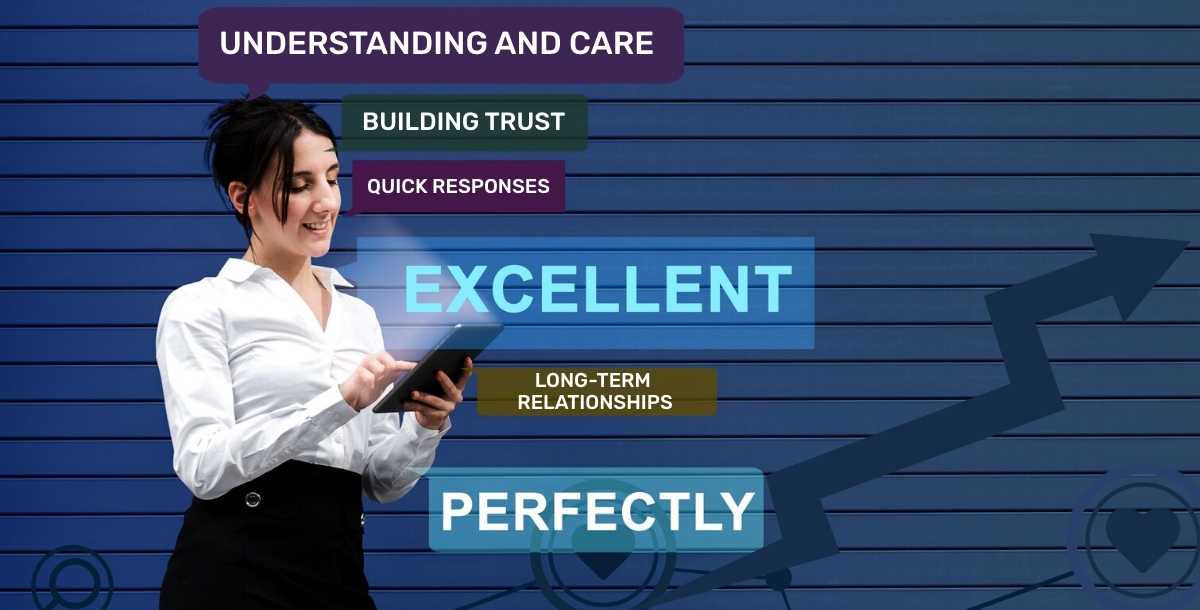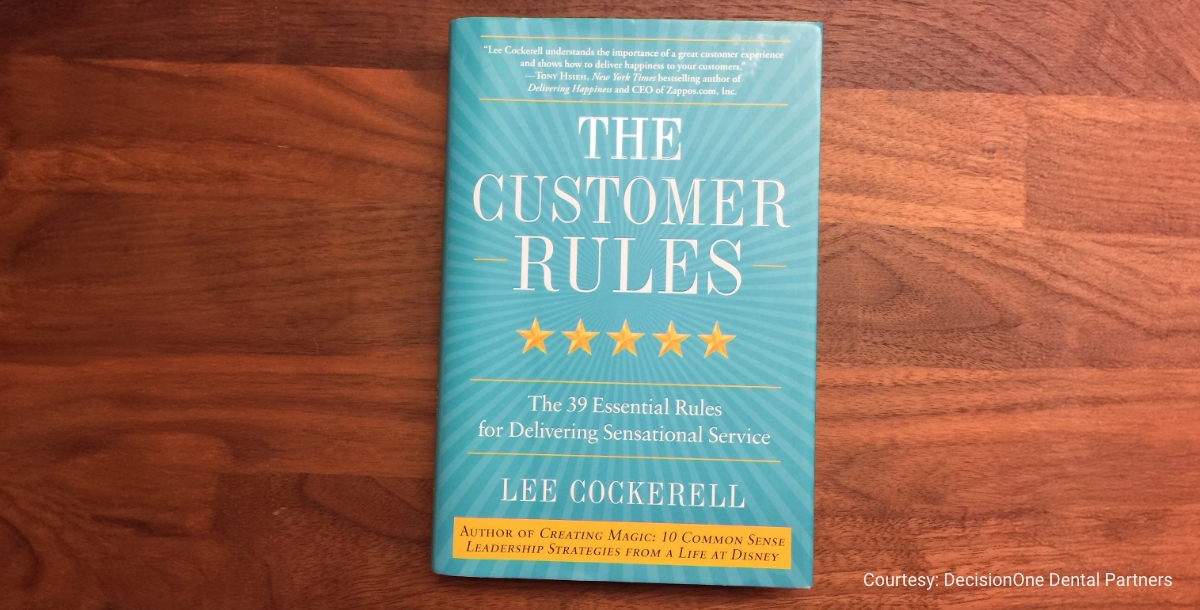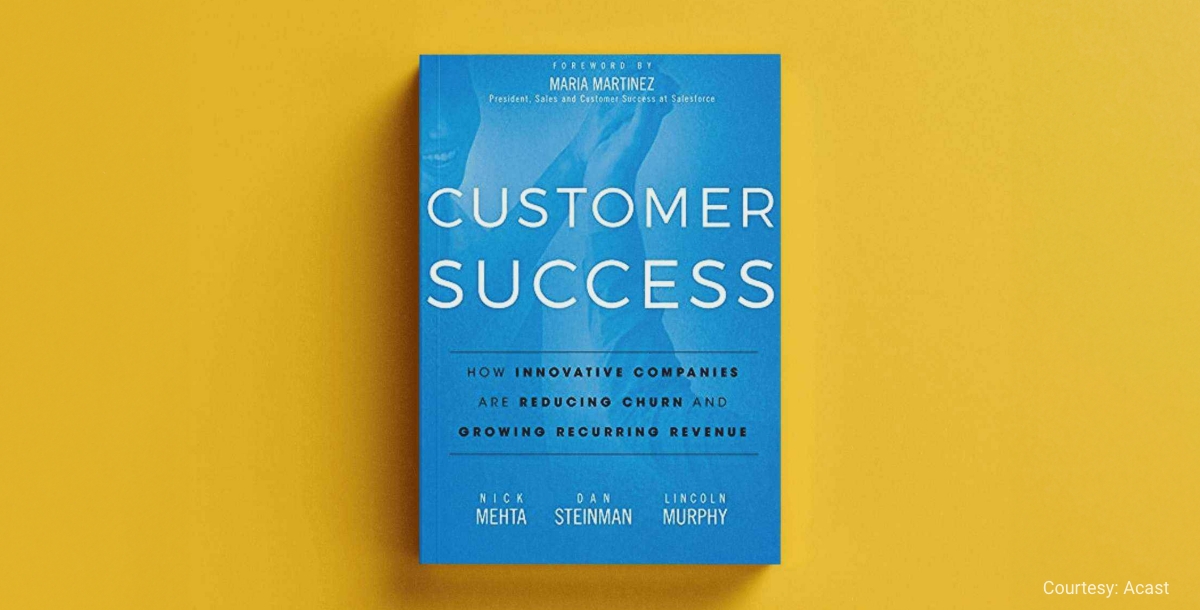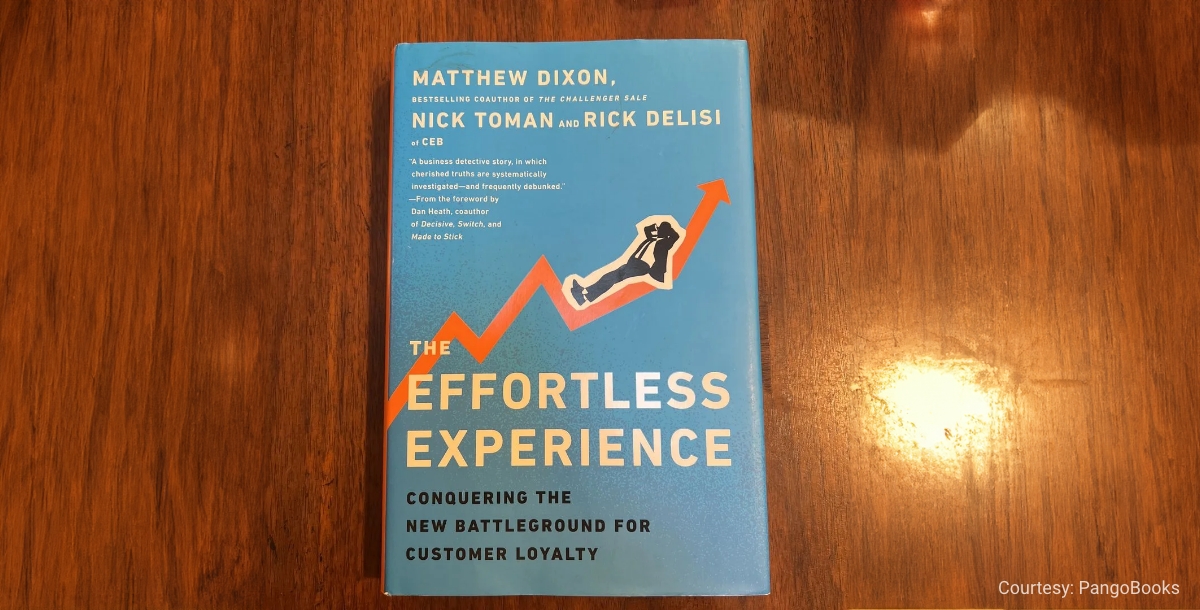Customer Service: Definition, Skills, and More!

Understanding customer service is paramount. It's not merely about resolving issues but crafting exceptional experiences that foster loyalty and trust. From proactive outreach to embracing innovative technologies like chatbots and live chat, businesses are redefining customer service. Learn why it matters, essential skills, and the pivotal role of technology in delivering inclusive and accessible support. Join us as we explore the evolving landscape of customer service excellence.
What is Customer Service?

Customer service is the support and guidance a company offers to its customers before, during, and after a purchase. It's about ensuring customer satisfaction, resolving their queries, and building a relationship that encourages loyalty and positive word-of-mouth. A proficient customer service team is pivotal in this regard, acting as the bridge between the business and its customers, ensuring that the customer's journey is smooth and commendable. Now you know what is customer service Let's move forward to learn about good customer service.
What is Good Customer Service?

Good customer service involves providing timely, attentive, and personalized support to meet the needs of the customer. It encompasses aspects such as:
- Prompt Responsiveness: Responding to customer inquiries and issues on time.
- Effective Communication: Clearly conveying information and actively listening to the customer's concerns.
- Empathy and Understanding: Showing genuine concern for the customer's situation and striving to understand their perspective.
- Problem Resolution: Working diligently to address and resolve customer issues or complaints.
- Going the Extra Mile: Offering additional assistance or information to ensure the customer's satisfaction. Good customer service builds trust, fosters loyalty, and promotes a positive brand image.
The Types of Customer Service
| Types of Customer Service | Proactive | Reactive |
|---|---|---|
| Approach | Anticipates customer needs and addresses them before they arise. | Responds to customer inquiries, issues, or complaints after they have been raised by the customer. |
| Initiatives | Engages in outreach programs, sends proactive communications, and offers proactive assistance. | Waits for customers to reach out for assistance or support. |
| Focus | Emphasizes preventing problems and improving the overall customer experience. | Focuses on resolving problems and addressing customer concerns as they occur. |
Customer Service Vs Customer Support
| Aspect | Customer Service | Customer Support |
|---|---|---|
| Definition | Assistance is provided before, during, and after a purchase, focusing on guidance and satisfaction. | Assistance primarily focused on addressing technical issues or resolving problems after a purchase. |
| Scope | Encompasses the entire customer experience, including inquiries, product information, and feedback. | Primarily deals with troubleshooting, resolving complaints, and providing technical assistance. |
| Focus | Oriented towards ensuring customer satisfaction, loyalty, and relationship-building. | Mainly concerned with problem resolution and ensuring the functionality and usability of products or services. |
| Channels | Can include various communication channels like phone, email, chat, social media, etc. | Typically involves direct communication channels like phone support, live chat, ticketing systems, etc. |
| Skills Required | Requires strong communication, empathy, product knowledge, and relationship-building skills. | Requires technical expertise, problem-solving abilities, patience, and proficiency in handling complex issues. |
Why Customer Service Matters?

Customer service matters significantly to businesses because it directly impacts customer satisfaction, retention, and ultimately, the bottom line. Here's a breakdown of why good customer service and bad customer service are crucial:
Good Customer Service:
- Customer Satisfaction: Studies show that 73% of customers fall in love with a brand because of friendly customer service representatives (RightNow). Additionally, 70% of buying experiences are influenced by how the customer feels they are being treated (McKinsey).
- Customer Loyalty and Advocacy: 77% of consumers are likely to recommend a brand to a friend after having a positive experience (Temkin Group). Satisfied customers are also more likely to become repeat buyers and brand advocates.
- Increased Revenue: Companies with superior customer experience bring in 5.7 times more revenue than competitors that lag in customer experience (Aberdeen Group). Moreover, a mere 5% increase in customer retention can lead to a 25%-95% increase in profits (Bain & Company).
Bad Customer Service:
- Customer Dissatisfaction and Churn: Approximately 96% of unhappy customers don't complain, but 91% of those will simply leave and never come back (1st Financial Training Services). Losing customers due to poor service can be detrimental to long-term success.
- Negative Word of Mouth: 59% of 25-34-year-olds share poor customer service experiences online (American Express). Negative reviews and word-of-mouth can tarnish a company's reputation and deter potential customers.
- Loss of Revenue: Businesses risk losing revenue not only from dissatisfied customers but also from potential customers who are deterred by negative reviews or experiences shared by others.
5 Essential Elements of Customer Service

Here are the five most important aspects of customer service:
- Empathy and Understanding: Customer service begins with empathy and understanding toward the customer's needs, concerns, and emotions. Empathetic interactions build rapport, trust, and loyalty, as customers feel valued and heard.
- Prompt Responsiveness: Timely responses to customer inquiries, issues, and complaints are crucial for providing satisfactory service. Customers appreciate quick resolutions and acknowledgment of their concerns, which enhances their overall experience.
- Effective Communication: Clear and concise communication is essential in customer service interactions. Customer service representatives should convey information accurately, using language that is easy for customers to understand. Active listening skills are also critical for comprehending customer needs and resolving issues effectively.
- Problem Resolution Skills: The ability to identify and resolve customer problems efficiently is a cornerstone of excellent customer service. Customer service representatives should possess problem-solving skills, resourcefulness, and the authority to address issues promptly, ensuring customer satisfaction.
- Continuous Improvement: Customer service is an ongoing process that requires constant evaluation and improvement. Companies should actively seek feedback from customers to identify areas for enhancement and implement strategies to enhance service quality continually. By adapting to changing customer needs and market trends, businesses can maintain a competitive edge and deliver exceptional customer experiences.
Customer Service Objectives: Setting the Path to Success

Great customer service is vital for any successful business. It's about more than just solving problems. It's about building strong, lasting connections with customers. To achieve this, customer service teams focus on a few key objectives:
- Quick Responses: Customers want fast answers to their questions. Responding promptly shows we care and can be relied upon.
- Understanding and Care: We aim to solve problems while showing empathy and understanding towards our customers' situations. This personal touch helps build trust and loyalty.
- Building Trust: Every interaction with a customer shapes their view of our brand. By consistently providing excellent service, we strengthen our reputation and credibility.
- Long-term Relationships: Customer service isn't just about fixing immediate issues. We want to build lasting relationships by anticipating needs, offering proactive help, and ensuring customer satisfaction over time.
Key Performance Indicators for Exceptional Customer Service

To make sure we're hitting these objectives, we keep an eye on a few important numbers:
- Response Time: We track how quickly we get back to customers after they reach out to us.
- Resolution Time: We measure how long it takes us to solve customers' problems.
- Customer Satisfaction: We regularly check in with customers to see how happy they are with our service.
- Feedback by Channel: We look at how satisfied customers are with different ways of reaching us, like phone calls or emails.
- Ticket Backlog: We keep an eye on how many issues are still waiting to be resolved so we can manage our workload effectively.
Boosting Customer Service Skills With Technology

- Empathy and Communication: Empathy and communication are at the heart of customer service. While these are inherently human traits, technologies like live chat support software enable service teams to express understanding and convey solutions in real-time, ensuring that customers feel heard and valued at every step of their journey.
- Adaptability and Learning: In the fast-paced world of customer service, being adaptable and open to learning is crucial. Technologies such as help desk support software empower agents by providing them with historical data and customer insights, enabling them to adapt their approach to meet diverse customer needs. This continual learning process, supported by real-time information, ensures agents are always equipped to deliver exceptional service.
- Problem-solving and Patience: These skills are crucial for addressing customer concerns effectively. Ticketing systems play a pivotal role here, organizing issues efficiently and allowing customer service teams to tackle problems methodically. This streamlines the process and ensures that every customer issue is addressed with patience and precision.
- Technical Knowledge: A deep understanding of the products or services is essential. Here, a customer support chatbot can provide customers with instant access to a wealth of knowledge, from troubleshooting steps to detailed product information, making the customer service team's job easier by handling routine inquiries and allowing them to focus on more complex issues.
Elevating Customer Service Through Accessibility and Inclusivity

Emphasizing accessibility and inclusivity in customer service is crucial for businesses aiming to provide a welcoming environment for all customers, thereby enhancing brand loyalty and reputation. Accessibility ensures that services are available to people with disabilities, incorporating features like text-to-speech options and wheelchair-accessible facilities. Meanwhile, inclusivity involves tailoring services to cater to diverse cultural, linguistic, and socioeconomic backgrounds.
To implement these values, companies should conduct accessibility audits, diversify communication channels, and provide thorough training on inclusive practices. Incorporating technology plays a key role here like a customer service chatbot and live chat support software improve service accessibility. Adding a lead generation chatbot can further enhance customer interaction by proactively engaging visitors, capturing their interest, and guiding them through services or products, thus ensuring that initial customer engagement is as inclusive and accessible as the subsequent support. Regularly soliciting customer feedback is essential for continuous improvement, ensuring that accessibility and inclusivity efforts effectively meet customer needs.
By prioritizing these elements, alongside innovative tools like a lead generation chatbot, customer experience chatbot companies not only expand their customer base but also project a positive brand image as compassionate and customer-centric. This strategy ensures every customer interaction is respectful, empathetic, and tailored to meet the diverse needs of the community, fostering a loyal customer base and a reputation for genuine care.
Customer Service Skills: What They Are and How to Develop Them

- Language and Tone: This refers to using the right words and attitude when communicating with customers. It's important to match the customer's mood while staying calm and professional.
- Empathy: Empathy is the ability to understand and share the feelings of others, in this case, the customers. It's about putting yourself in the customer's shoes, acknowledging their emotions, and showing genuine concern for their well-being. Empathetic interactions can help ease tensions and build trust between the customer and the support agent.
- Active Listening: Instead of jumping to solutions right away, it's about fully understanding what the customer is saying and feeling. This shows empathy and helps in providing better assistance.
- Attention to Detail: Reading messages carefully helps in understanding exactly what the customer needs. This is especially important because sometimes customers might not express themselves clearly, and agents need to pick up on subtle cues.
- Concentration: When dealing with customer inquiries on social media, it's important to respond quickly and politely. However, it's also essential to avoid getting into arguments or controversial situations.
- Cooperativeness: Sometimes, solving a customer's problem might require help from other departments. This skill involves working well with others to provide the best possible support to customers.
- Problem-Solving: This skill involves finding solutions to customers' issues effectively and efficiently. It requires thinking critically, analyzing the situation, and coming up with creative solutions that meet the customer's needs.
- Clear Communication: It's crucial to give clear and timely responses to customers. This includes letting them know how long they might have to wait and making sure they feel like their concerns are being taken seriously.
- Interpersonal Skills: This means personalizing responses to make customers feel valued. It involves adapting standard messages and signatures to match the company's values and making interactions feel more human.
- Multitasking: Customer service agents often have to handle multiple conversations at once. This skill involves managing time effectively and making sure that each customer gets the attention they need without sacrificing quality.
Customer Service Books to Share with Your Team
Sharing insightful customer service books with your team can greatly enhance their skills and perspective. Here are expanded recommendations in point form:
- The Customer Rules by Lee Cockerell
- Outlines 39 rules for delivering exceptional customer service.
- Draws on the author's experiences as an executive at Disney.
- Offers practical advice and real-life examples for each rule.
- A guide to understanding and implementing the principles of top-tier service.
- Customer Success by Nick Mehta, Dan Steinman, and Lincoln Murphy
- Focuses on reducing churn and increasing recurring revenue through customer success.
- Details strategies for ensuring customer satisfaction and retention.
- Highlights the importance of building a proactive customer success team.
- Delivering Happiness by Tony Hsieh
- Chronicles Zappos' journey to outstanding customer service through company culture.
- Shows how focusing on happiness can drive profits, passion, and purpose.
- Inspires with Zappos' commitment to customer satisfaction and employee welfare.
- Raving Fans by Ken Blanchard and Sheldon Bowles
- Introduces the concept of turning customers into vocal brand advocates.
- Provides a framework for exceeding customer expectations.
- Includes engaging stories and actionable advice for creating loyal and enthusiastic customers.
- The Effortless Experience by Matthew Dixon, Nick Toman, and Rick Delisi
- Challenges the notion that "wowing" customers is necessary for loyalty.
- Argues for reducing customer effort to increase satisfaction and loyalty.
- Offers research-backed insights into simplifying customer interactions.





Focus on Customers
- Customer service skills and training are essential for maintaining a customer-focused approach.
- Successful companies prioritize customer needs to build trust and loyalty.
- Listening to customer feedback, including complaints and feature requests, is crucial.
- Granting access to customer data across the organization helps customize the customer experience.
- Siloed data within teams can lead to a lack of focus on customers and negative consequences for the company.
- Integrating customer data across teams ensures a holistic understanding of customer needs and preferences, leading to better service.
Conclusion
Providing exceptional customer service is not just about resolving queries; it's about creating an experience that leaves customers feeling valued and understood. With the advent of technology, businesses have an array of tools at their disposal to enhance customer interactions, streamline service delivery, and ensure that every customer feels included and cared for. From leveraging chatbots for instant responses to employing live chat for real-time problem-solving, technology empowers businesses to meet and exceed customer expectations consistently. Accessibility and inclusivity are also key, ensuring that services cater to a broad spectrum of customer needs and preferences. As businesses continue to embrace these strategies, leveraging tools like live chat becomes an indispensable part of the customer service toolkit, offering a direct, personal, and efficient way to engage with customers. Enhance your customer service experience with live chat today, and see how it can transform your customer interactions into opportunities for growth and loyalty.
Related Articles
- Best Tips to Create Animated Graphics That Stand Out
- How to Write Website Copy That Converts: A Step-by-Step Guide
- How to Erase Background from Image on iPhone?
- How to Use AI for Blog Writing
- Digital Customer Engagement: A Comprehensive Overview
- Choosing the Right Workflow Automation Solutions: Your Path to Efficiency
- The Ultimate Guide to Setting up Facebook Business Manager Account
- Top ConvertKit Integrations for Streamlined Email Marketing
- The Ultimate Guide for Writing a Value Proposition [With Examples]
- Top 10 Healthcare Web Design Inspirations
